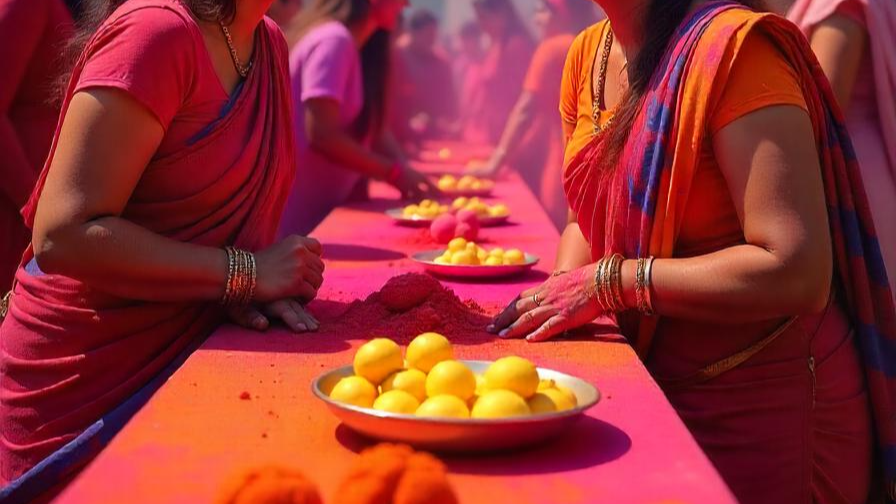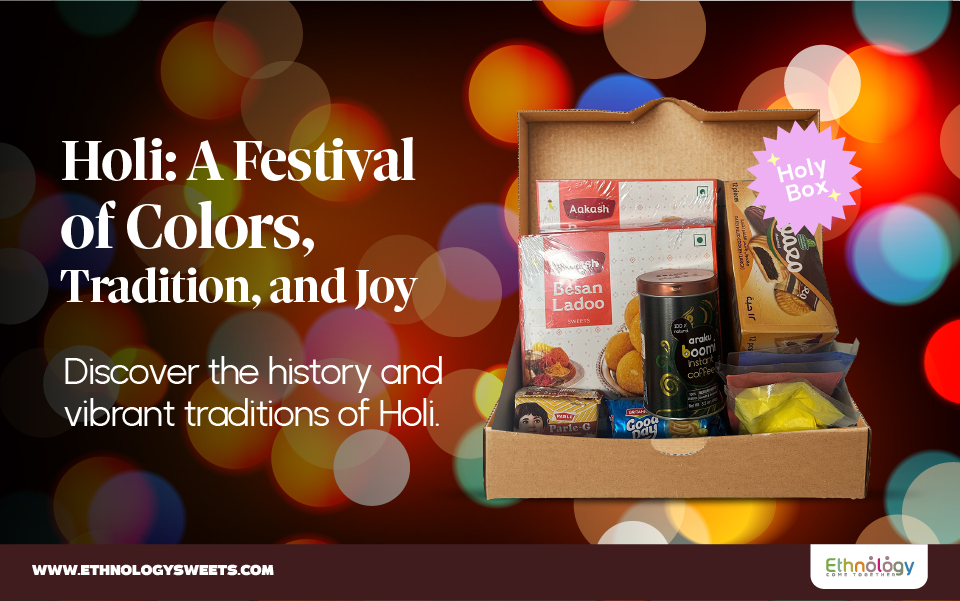The Meaning of Holi: More Than Just a Festival of Colors
Holi Celebration, the vibrant Hindu festival of colors, marks the arrival of spring and the triumph of good over evil. Rooted in Indian tradition, it is one of the most widely celebrated festivals globally, bringing communities together with joy, laughter, and color-filled festivities.
Though Holi Celebration is most popular in India and Nepal, it has gained recognition worldwide, with celebrations in Europe, the U.S., Canada, and beyond. The festival is celebrated for two days, beginning on Purnima (Full Moon Day) in March.
Holi is more than just a visual spectacle of colors—it is about embracing positivity, letting go of negativity, and strengthening bonds with family and friends.
The Origins of Holi Celebration: An event Rooted in Ancient Traditions
Holi’s Historical Evolution
Holi traditions have changed over time, but its origins date back centuries before the Common Era. Ancient temple paintings from medieval India depict people dancing around pools of colored water, showcasing how deeply rooted this festival is in Indian culture.
While there are multiple legends behind Holi, the most well-known story revolves around the demon king Hiranyakashyap and his son, Prahlad.
The Legend of Hiranyakashyap and the Triumph of Good
Hiranyakashyap, a powerful king, demanded that everyone worship him. However, his own son, Prahlad, was a devoted follower of Lord Naarayana. Enraged by this, the king plotted to have his son destroyed.
🔥 Enter Holika—the name behind “Holi”:
Hiranyakashyap’s sister, Holika, possessed a magical ability to survive fire. She was ordered to take Prahlad into the flames, expecting him to perish while she remained unharmed.
However, her powers only worked when she was alone in the fire. As a result, Holika perished, while Prahlad was saved by divine intervention. This symbolizes the victory of good over evil, a theme central to Holi.
To commemorate this legend, people light the Holika bonfire on the first evening of Holi, praying to burn away inner negativity and welcome positivity into their lives.

Holi Traditions: Colors, Celebration, and Togetherness
The second day of the festival is called Rangwali Holi, where people take to the streets to engage in the famous color-throwing celebration.
🌈 Why do we use color powder for Holi?
The colorful tradition originates from the Hindu god Krishna, who, in his playful youth, threw colored powders at his beloved Radha and the gopis (milkmaids). This joyful and flirtatious ritual became the foundation for the modern-day Holi celebration.
Originally, Holi powders were made from natural sources, such as flowers, turmeric, and medicinal herbs. Today, while synthetic colors are more common, there is a growing trend to return to eco-friendly, plant-based powders to keep the celebration safe and sustainable.
💦 How do people celebrate Holi?
- People gather in public spaces, dancing, singing, and smearing each other with bright-colored powders.
- Water balloons and super soakers filled with colored water add to the excitement.
- The festival transcends social barriers, allowing friends, family, and even strangers to celebrate together.
Holi and the Arrival of Spring: A Time for New Beginnings
Beyond its spiritual significance, Holi also represents the transition from winter to spring. The festival serves as a time to:
✔ Reconnect with loved ones and mend broken relationships.
✔ Celebrate the new season with delicious traditional Indian treats.
✔ Embrace unity, forgiveness, and fresh starts.
In many ways, Holi is often compared to Thanksgiving in the U.S., as it coincides with the spring harvest season. During this time, Hindu temples are decorated with flowers, and people come together to share food, laughter, and joy.
The Hindu American Foundation highlights that Holi encourages people to forgive and forget—to settle old disputes, make new friendships, and embrace positivity.

Traditional Holi Foods and Drinks: A Feast of Flavors
No Holi celebration is complete without delicious Indian delicacies. Some of the most popular Holi treats include:
🥟 Gujiya – A sweet dumpling filled with dried fruits, nuts, and khoya (thickened milk), representing abundance and prosperity. If you want to try some of their goods we suggest you try Boondi Ladoo
🥛 Thandai – A cooling, milk-based drink infused with spices, nuts, and saffron. According to the Hindustan Times, thandai provides relief from the scorching summer heat.
🥤 Lassi – A yogurt-based drink, flavored with fruits, spices, or herbs, known for its refreshing and digestive benefits.
From sweet treats to spiced drinks, Holi’s festive foods enhance the joy of the celebration, bringing families together to indulge in India’s rich culinary traditions.
Discover the flavors of Holi https://ethnologysweets.com/india/
The Global Expansion of Holi: A Celebration Without Borders
Holi is no longer just an Indian festival—it has become a global event celebrated in countries like:
🌍 United States – Holi festivals take place in cities like New York, Los Angeles, and Chicago.
🌏 United Kingdom – Major Holi events are held in London, Birmingham, and Manchester.
🌎 Australia & Canada – Cultural organizations host public Holi celebrations filled with music, food, and dance.
The festival has also gained popularity among non-Hindu communities, who embrace Holi’s message of love, inclusivity, and positivity.
Celebrate Holi with Authentic Indian Sweets and Colors!
Looking to add more color to your life this Holi season? 🎨✨
🛍️ Get your Holi Box, filled with Indian treats and vibrant Holi powders, at www.ethnologysweets.com!
Whether you’re celebrating with family, friends, or joining a local Holi event, make sure to embrace the spirit of joy and new beginnings.🎉 Happy Holi! May this festival bring you love, laughter, and endless colors! 🌈




